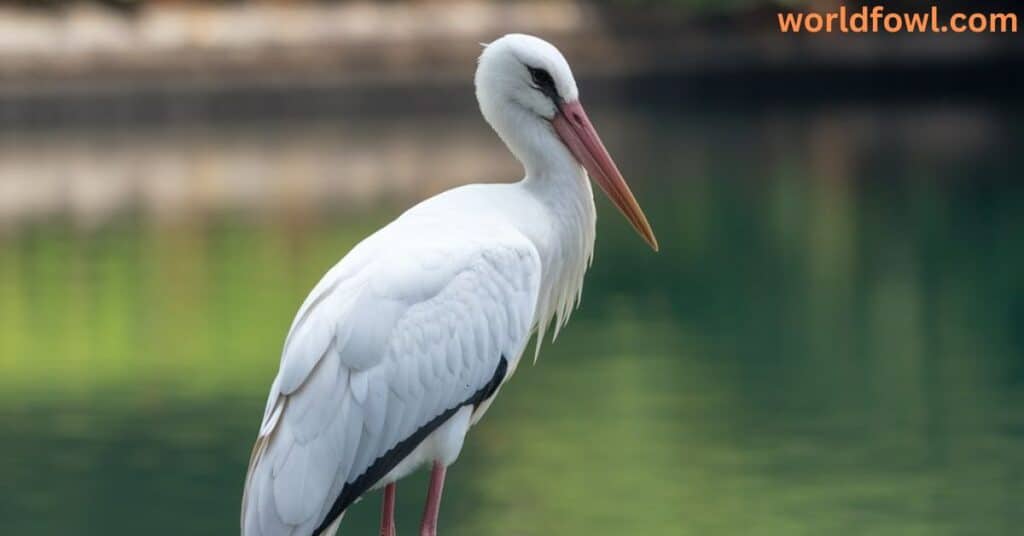Wood storks, with their striking bald heads, long, curved bills, and impressive wingspans, are a subject of fascination among bird enthusiasts and nature lovers. But a lingering question often arises: Do wood storks attack humans?
At first glance, their large, imposing stature may seem intimidating, leading some to believe that these birds could be aggressive. However, as we’ll explore in this article, the truth is quite different. Wood storks are not naturally inclined to attack humans. Instead, their behaviors, instincts, and interactions with the environment suggest they are non-aggressive creatures that tend to avoid human contact.
In this comprehensive guide, we’ll take a deep dive into the lives of wood storks, exploring their habitat, feeding habits, and behavior, and answering the critical question: Do wood storks attack humans? Along the way, we’ll also discuss their importance to wetland ecosystems and offer useful tips for safely observing these remarkable birds in their natural environment.
What Are Wood Storks?
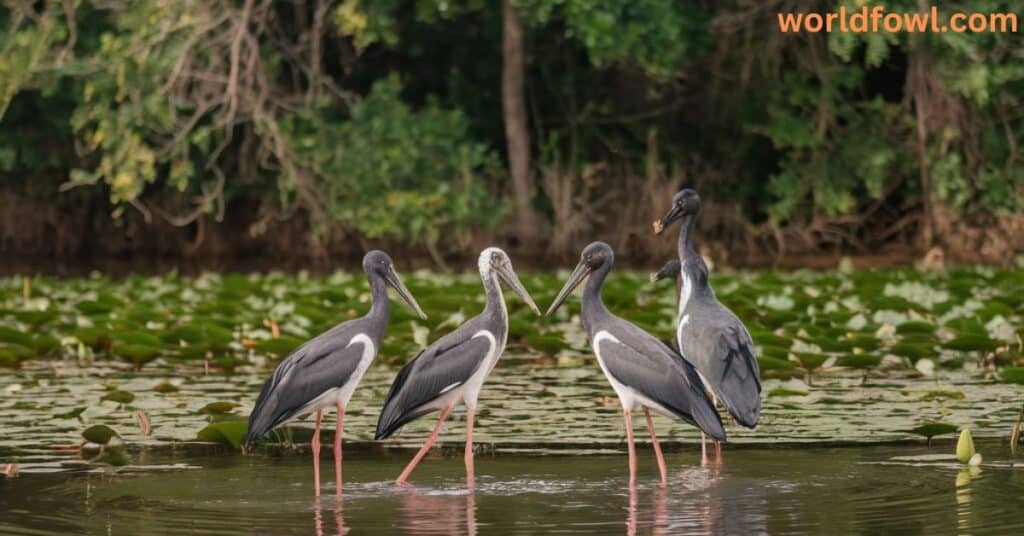
Wood storks (scientific name Mycteria americana) are large wading birds found in the wetland habitats of North America, Central America, and the Caribbean. With their bald heads, long legs, and black-tipped wings, they are hard to miss when they’re foraging or nesting. While their appearance is striking, it’s their role in the ecosystem that truly makes them fascinating.
Physical Characteristics and Identification
Wood storks are characterized by their large, long, curved bills, which they use to hunt for prey in shallow waters. Their wingspan can extend up to 5 feet, which allows them to soar gracefully across wetlands in search of food or a safe place to nest. These birds have long legs, which make them well-suited to wading through the shallow waters of their wetland habitats, where they can feed on aquatic animals.
- Bald head: Unlike many other bird species, wood storks lack feathers on their heads, giving them a distinct and recognizable appearance.
- Black-tipped wings: Their dark, wing tips contrast sharply with their predominantly white plumage.
- Long, curved bill: A specialized feature that helps them feel around for prey in murky waters.
Habitat and Distribution
Wood storks are predominantly found in the freshwater environments of southern North America, Central America, and parts of the Caribbean. They thrive in wetlands, marshes, and shallow waters, where they can forage for food.
These birds are migratory, and during certain times of the year, they will travel from the southern United States to Central America. Wood storks are considered protected species in many parts of their range, and their populations are monitored by conservationists to ensure that wetland habitats remain healthy and conducive to their survival.
- Wetlands: Wood storks rely heavily on wetland ecosystems, where they find most of their food. Wetlands are also critical to their nesting and breeding habits.
- Wildlife reserves: In certain regions, wood storks are protected by conservation efforts in wildlife reserves, where they are able to nest and feed without the disturbance of human activity.
Wood storks are known to be environmental indicators; their presence or absence can be an important measure of the health of wetland environments. When the health of wetlands begins to decline, wood storks are often one of the first species to be affected, serving as a warning sign for environmental degradation.
See Also : Do Cicadas Attack Humans? Myths vs. Facts
Are Wood Storks Aggressive?
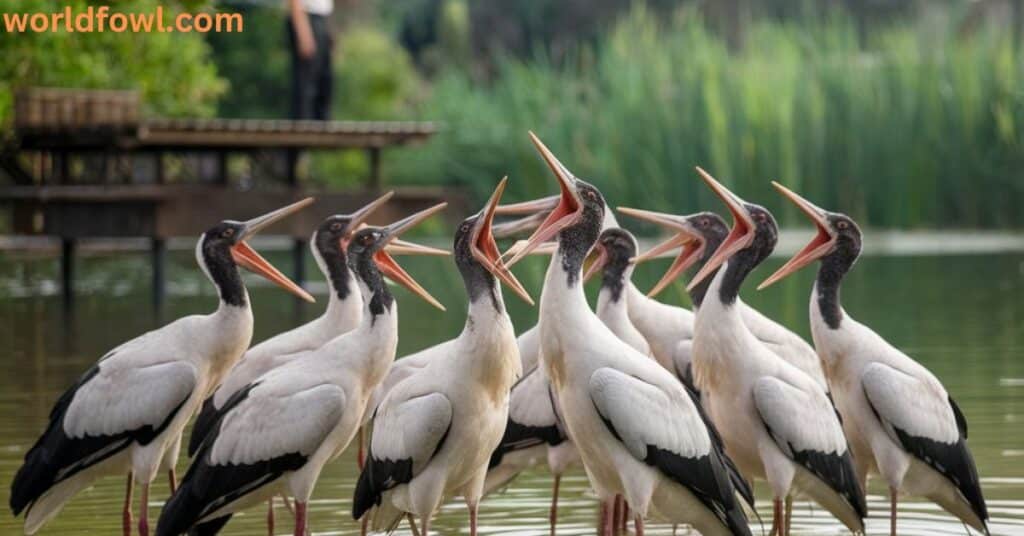
Now that we have an understanding of what wood storks are, let’s explore whether these birds are aggressive and if they pose any danger to humans. Many people, seeing their large size and imposing appearance, may mistakenly believe that wood storks could be aggressive. However, the reality is that wood storks are not naturally aggressive creatures. They are generally peaceful and prefer to avoid confrontation with both other animals and humans.
Aggression in Wood Storks: Fact or Fiction?
In the wild, aggression is often a means of defense or to protect territory, especially when it comes to breeding and nesting habits. Wood storks, like many birds, exhibit aggressive behavior primarily during nesting season when they are defending their nests or young. During this time, they can become more territorial, and their behavior may seem more aggressive than usual.
However, outside of this time, wood storks typically avoid aggression. They are more likely to flee from perceived threats than to confront them head-on. Their behavior is not inherently aggressive, and they do not seek out conflict. Their tendency to stay solitary and keep to themselves means they are rarely involved in disputes with other animals or humans.
In contrast to some bird species that may actively chase off intruders or display physical aggression, wood storks tend to be much more docile in their interactions with humans. They prefer to go about their daily activities in their natural environment without engaging with humans unless absolutely necessary.
Wood Storks’ Defense Mechanisms
Although wood storks are generally non-aggressive, like many animals, they do have methods of defense if they feel directly threatened. These defense mechanisms are often employed when the birds feel that their safety or territory is in jeopardy.
- Beak and claws: Wood storks can use their sharp long, curved bills and claws to defend themselves if physically attacked or cornered. Their bill can be used as a weapon in an attempt to ward off a threat.
- Flight: Wood storks are strong fliers, and when they feel threatened, they will usually choose to fly away from the danger rather than engage in a fight.
For the most part, these birds prefer to avoid human conflict and will not attack unless provoked.
See Also : Do Hippos Attack Humans? Deadly Secret!
Why Wood Storks Don’t Attack Humans
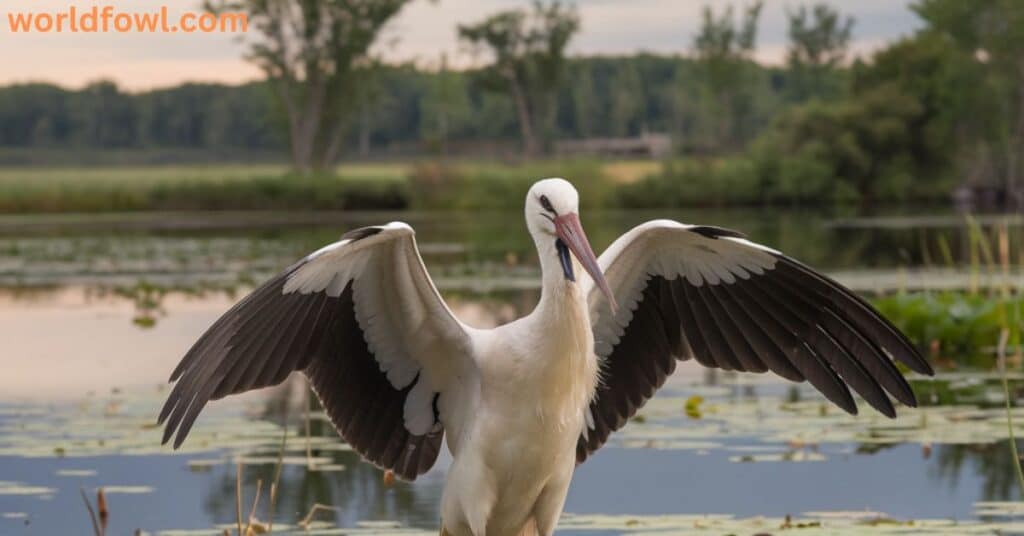
Wood storks’ natural instincts and behavior patterns suggest that they are not inclined to attack humans. While they do possess the ability to defend themselves, these birds are primarily concerned with survival and maintaining their ecosystem.
Non-Predatory Nature of Wood Storks
One of the key reasons that wood storks do not attack humans is that they are non-predatory birds. Their diet consists primarily of aquatic animals such as fish, frogs, and small invertebrates found in shallow waters. Humans are not part of their natural diet, and wood storks do not see people as a source of food or a threat in terms of hunting.
Wood storks are opportunistic feeders, and they rely on the abundance of prey in their environment to sustain themselves. They feed using a passive feeding technique called tactile foraging, which means they sweep their bills through the water to feel for prey rather than relying on vision. Their feeding habits are not aggressive by nature, and they generally avoid encounters with other animals, including humans.
Solitary Lifestyle and Avoidance
Wood storks lead a solitary lifestyle outside of breeding season. They are not pack animals and generally prefer to keep to themselves. This solitary behavior means they are less likely to seek out interactions with other species, including humans. When wood storks encounter people, their instinct is to retreat to a safe distance rather than engage.
Unlike some other bird species that may approach humans in search of food or out of curiosity, wood storks tend to remain wary of people. They are more comfortable in their natural habitat, where they can go about their business without the interference of human activity.
Habitat and Behavior: Staying Out of Reach
The wetlands and shallow waters where wood storks live are not typically areas where humans frequent. This is another reason why wood storks are unlikely to attack humans: their preferred environment is not one that overlaps with human settlements. They are not creatures that are accustomed to close human contact and will typically avoid human-populated areas.
In conservation areas and wildlife reserves, where humans and birds may come into closer contact, wood storks will still maintain a safe distance. They may tolerate human presence to some extent, but they are unlikely to approach people.
Diet and Feeding Habits
Understanding a wood stork’s diet provides further insight into why these birds are not inclined to attack humans. Wood storks rely on a diet of small aquatic animals, including fish, amphibians, and insects, which they find in shallow waters of wetlands. Their feeding habits and foraging techniques play a crucial role in their behavior and interaction with their surroundings.
Foraging Techniques: Passive and Tactile
Wood storks use a unique method for finding food, called tactile foraging. Instead of hunting by sight, wood storks rely on the sense of touch. They sweep their long, curved bills through the water, feeling for fish and other prey. This technique is especially effective in shallow waters, where prey is abundant, but visibility is often limited.
Wood storks’ tactile foraging also means that they do not need to engage with other animals or humans while feeding. They are solitary feeders, often working alone in wetland habitats, and their feeding behavior does not encourage interaction with humans.
The Natural Diet
The typical diet of a wood stork includes:
- Small fish: Wood storks feed on fish, especially those that inhabit the shallow waters of wetlands.
- Amphibians: Frogs, tadpoles, and other amphibians are also a significant part of their diet.
- Invertebrates: Wood storks consume various insects and aquatic invertebrates, such as crustaceans.
These dietary preferences contribute to their non-aggressive nature. Wood storks are opportunistic feeders, taking advantage of the abundant resources in their environment. They do not view humans as potential prey and are far more focused on feeding themselves and maintaining their ecosystem.
Interactions with Humans
When it comes to human interaction, wood storks are generally nonchalant. They do not seek out human contact, and if humans approach, wood storks will often retreat. However, there are instances where wood storks may encounter humans in areas like wildlife reserves, birdwatching sites, or wetland conservation areas.
Wildlife Reserves and Birdwatching
In areas where humans engage in wildlife observation, wood storks may become somewhat accustomed to human presence. They are often found in wildlife reserves where birdwatchers, photographers, and conservationists gather to observe them. Despite the presence of humans, these birds generally remain at a safe distance and will often fly away if they feel threatened.
Birdwatchers who wish to observe wood storks should follow ethical guidelines and maintain a respectful distance from the birds. Observation distance is crucial to prevent disturbing their natural behaviors, and the use of binoculars or a zoom lens can help facilitate this while minimizing the risk of causing stress to the birds.
Respecting Nature and Ethical Birdwatching
When observing wood storks in the wild, it is important to practice ethical birdwatching. This includes:
- Not disturbing the birds’ nests or young.
- Avoiding loud noises or sudden movements.
- Using binoculars or cameras with zoom lenses to keep a respectful distance.
- Following the rules set forth by wildlife reserves and conservation areas.
Respecting the wood stork’s need for space helps ensure that both the observer and the bird remain safe and that the ecosystem is protected.
See Also : Do Squirrels Eat Bird Eggs?
Safety Tips for Observing Wood Storks
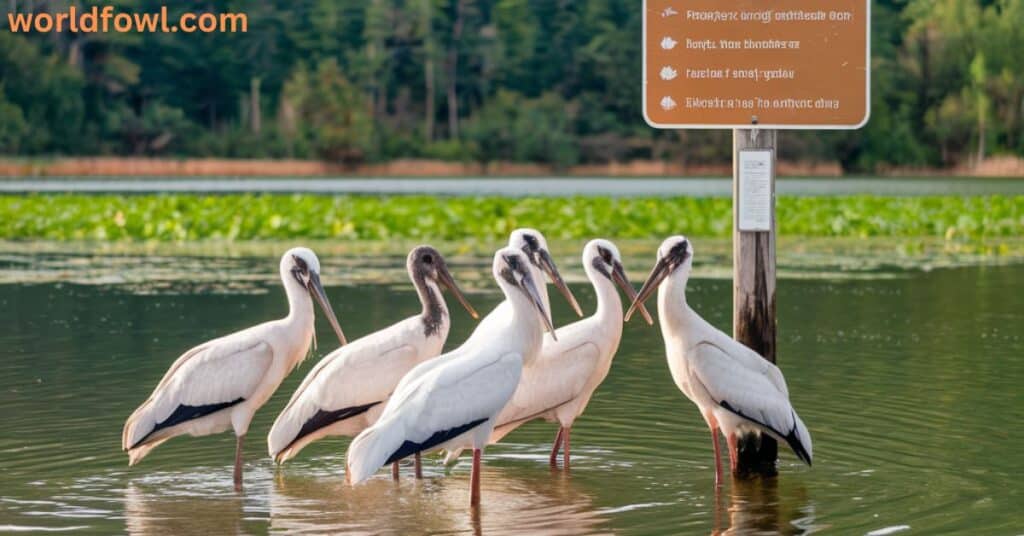
If you plan on observing wood storks in their natural habitat, here are some safety tips to ensure both you and the birds remain safe:
- Maintain a safe observation distance: Never get too close to the birds. Wood storks are more likely to fly away or become stressed if they feel threatened.
- Use binoculars or a zoom lens: This will allow you to observe the birds without intruding on their space.
- Avoid sudden movements or loud noises: Wood storks are sensitive to changes in their environment. Moving too quickly or making loud sounds may cause them to flee.
- Respect protected areas: Always follow the rules set by wildlife reserves or protected areas to avoid disturbing the birds or their habitat.
By following these simple safety tips, you can enjoy observing these magnificent birds without causing harm or stress.
FAQs
Are Wood Storks Dangerous to Humans?
Wood storks are non-aggressive birds that do not pose a danger to humans. They prefer to avoid human contact and will generally fly away if they feel threatened.
Can Wood Storks Defend Themselves if Threatened?
Wood storks can defend themselves using their long, curved bill and claws, but they typically prefer to flee rather than engage in physical confrontation.
Is It Safe to Approach Wood Storks?
It is best to maintain a respectful distance from wood storks. While they are not dangerous, getting too close may cause them to feel threatened and retreat.
What Should I Do if I Encounter a Wood Stork in the Wild?
If you encounter a wood stork in the wild, remain calm and observe from a distance. Do not attempt to approach or disturb the bird.
How Do Wood Storks Contribute to Their Ecosystem?
Wood storks play a critical role in maintaining the health of wetland ecosystems by helping control populations of smaller aquatic animals. Their feeding habits are vital for maintaining balance in these environments.
Conclusion: Do Wood Storks Attack Humans?
In conclusion, wood storks do not attack humans. These non-aggressive birds are more focused on foraging, nesting, and maintaining their place in the ecosystem than on confronting humans. While wood storks can defend themselves when necessary, they typically prefer to avoid conflict altogether. By respecting their space and following ethical birdwatching practices, humans can safely observe these remarkable creatures without disrupting their natural behavior.
Wood storks are an important part of wetland ecosystems, and their behavior serves as a reminder of the delicate balance that exists in nature. Whether you’re an avid birdwatcher or simply appreciate the beauty of wildlife, remember to always observe wood storks (and other wildlife) from a distance, and contribute to the conservation efforts that help protect them and their habitat.

Henry James is a seasoned blogger and a passionate storyteller on “World Fowl.” With years of experience crafting engaging content, he brings a unique blend of expertise and creativity to his writing. Henry specializes in exploring diverse topics with depth and clarity, captivating readers worldwide.

